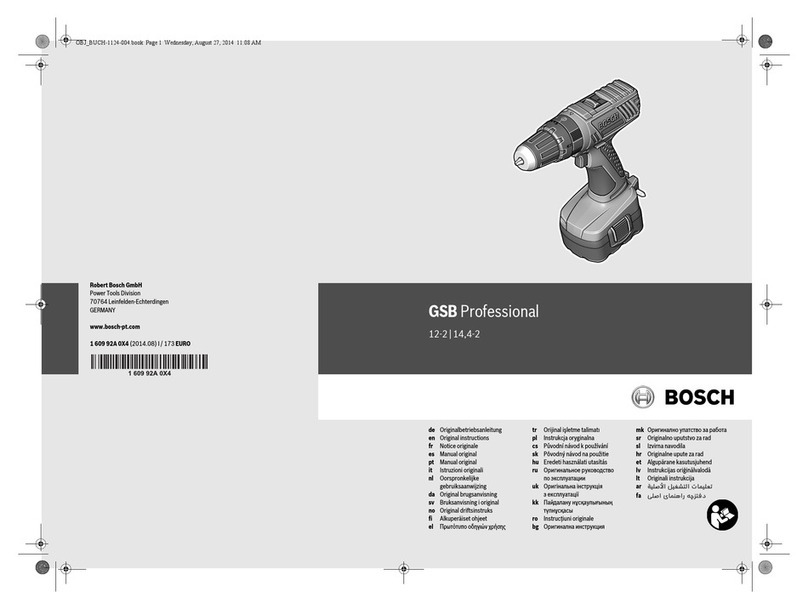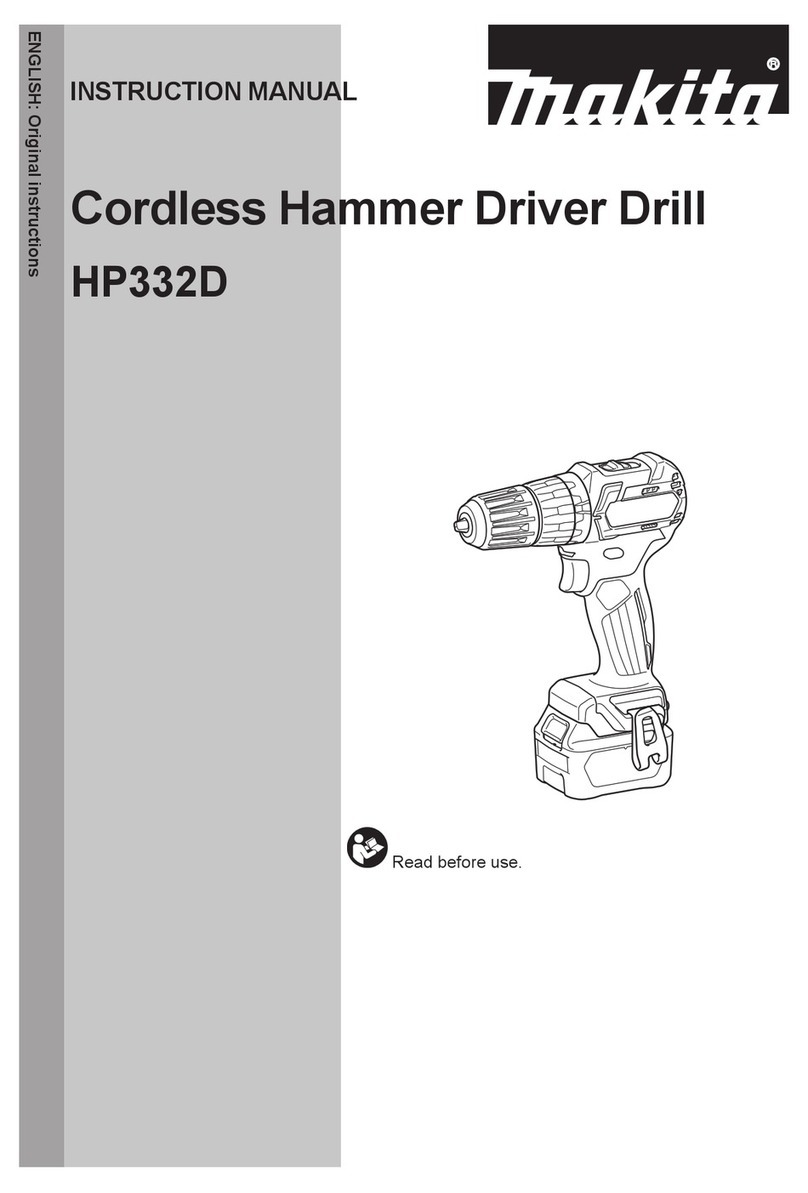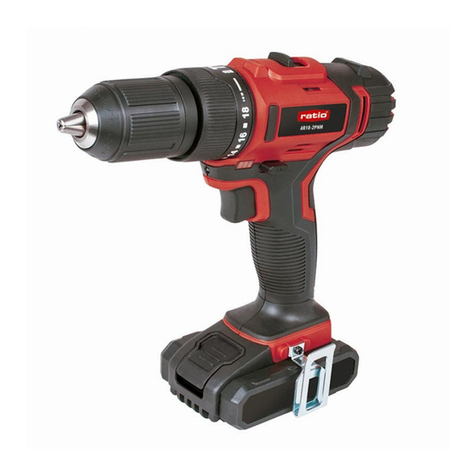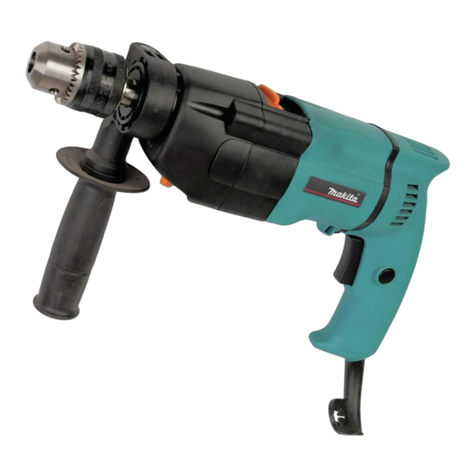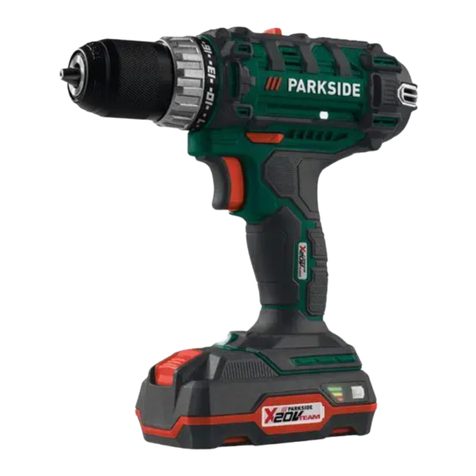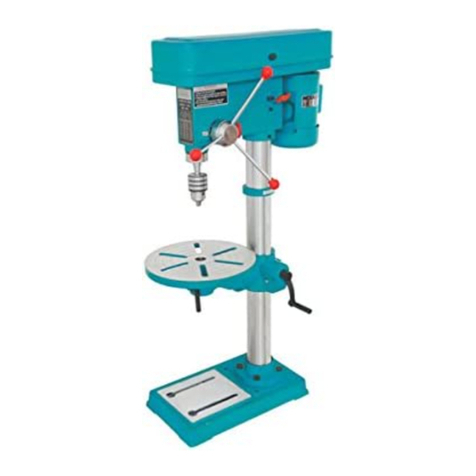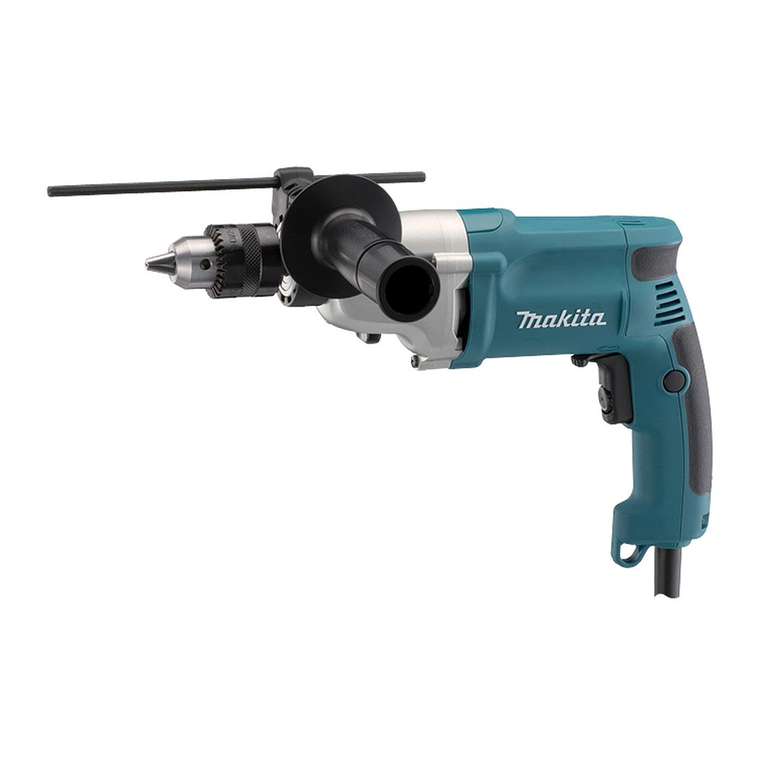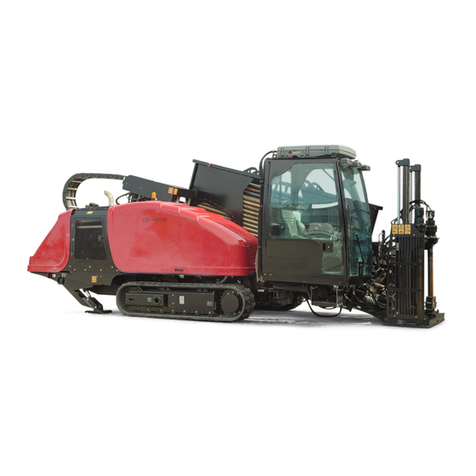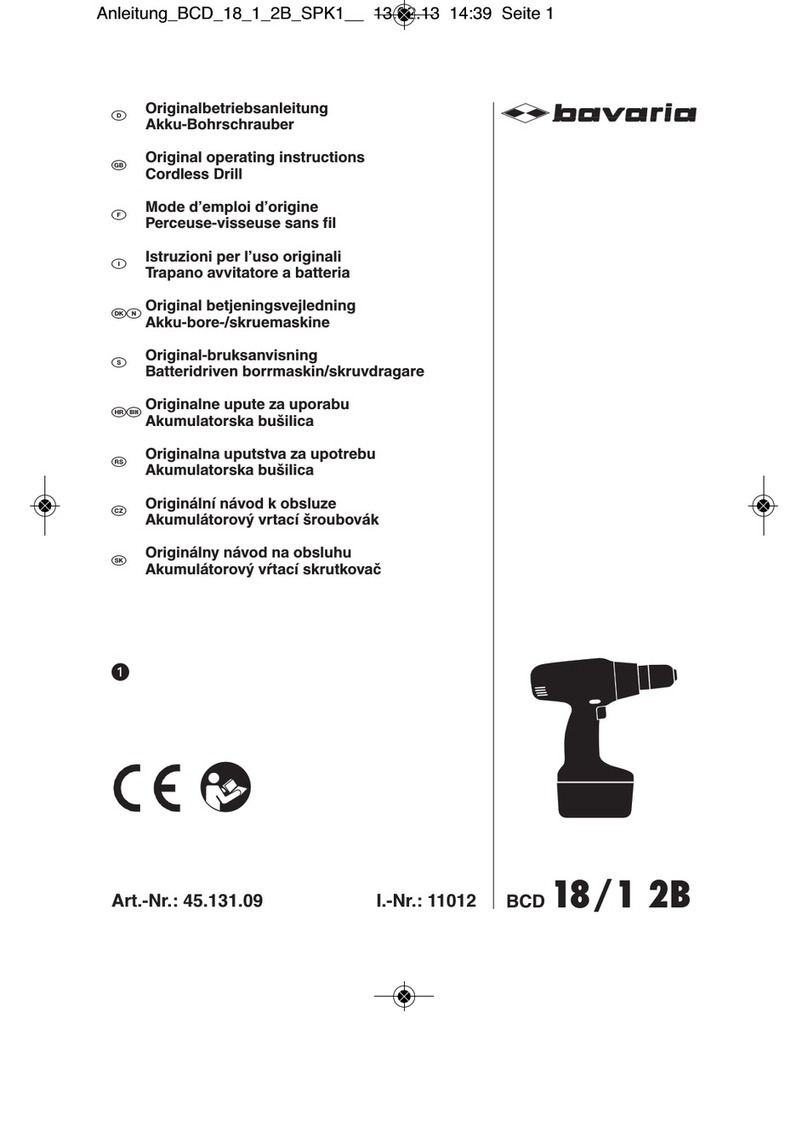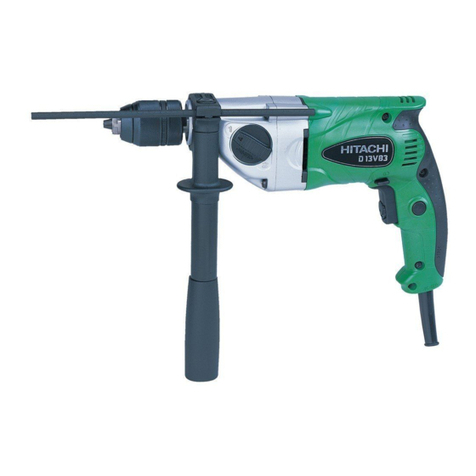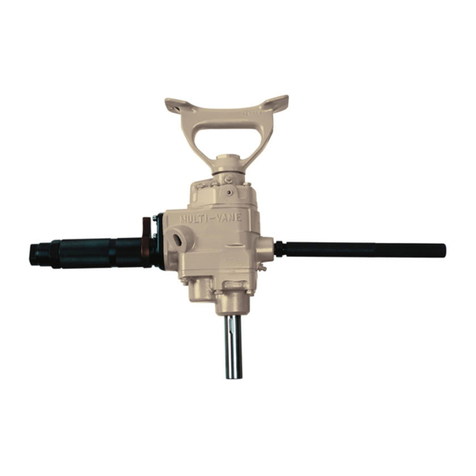SUHNER BEM 3 Technical manual

Betriebsanleitung
Dossier technique
Technical Document
BEM 3
BEW 3
BEM 3
BEW 3
Betriebsanleitung
Dossier technique
Technical Document

1. Sicherheitshinweise
1.1 Allgemeine sicherheitstechni-
sche Hinweise
1.2 Bestimmungsgemässe Ver-
wendung
1.3 Nicht bestimmungsgemässe
Verwendung
1.4 Herstellererklärung
1.5 Symbolerklärung
1.6 Abkürzungsverzeichnis
2. Inbetriebnahme
2.1 Montage
2.2 Anschliessen der Maschine
2.3 Inbetriebnahme
2.4 Leistungsdaten
2.5 Betriebsbedingungen
2.6 Sicherheitshinweise zur Inbe-
triebnahme
3. Handhabung / Betrieb
3.1 Maschine
3.2 Steuerung
3.3 Werkzeuge
4. Instandhaltung /Wartung
4.1 Vorbeugende Instandhaltung
4.2 Störungsbehebung
4.3 Wartungs- und Verschleissteile
4.4 Reparatur
4.5 Garantieleistung
4.6 Lagerung
4.7 Entsorgung / Umweltverträg-
lichkeit
1. Indications relatives à la
sécurité
1.1 Instructions générales de
sécurité
1.2 Utilisation conforme à la desti-
nations
1.3 Utilisation contraire à la desti-
nation
1.4 Déclaration du fabricant
1.5 Glossaire des symboles
1.6 Glossaire des abréviations
2. Mise en service
2.1 Montage
2.2 Raccordement de la machine
2.3 Mise en service
2.4 Performances
2.5 Conditions d‘exploitation
2.6 Indications relatives à la sécu-
rité lors de la mise en service
3. Utilisation / Exploitation
3.1 Machine
3.2 Commande
3.3 Outillages
4. Maintenance / Entretien
4.1 Maintenance préventive
4.2 Dépannage
4.3 Pièces d‘entretien et d‘usure
4.4 Réparation
4.5 Prestations de garantie
4.6 Entreposage
4.7 Elimination / Compatibilité
environnementale
1. Notes on safety
1.1 General safety informations
1.2 Use of the machine for pur-
poses for which it is intended
1.3 Incorrect use
1.4 Manufacturer‘s declaration
1.5 Symbol legend
1.6 Abbreviations
2. Commissioning
2.1 Installation
2.2 Connecting the power to the
machine
2.3 Taking the machine into serv-
ice
2.4 Rating data
2.5 Operating conditions
2.6 Safety instructions to be ob-
served on commissioning
3. Handling / Operation
3.1 Machine
3.2 Control
3.3 Tools
4. Service / Maintenance
4.1 Preventive maintenance
4.2 Troubleshooting
4.3 Servicing and wearing parts
4.4 Repair
4.5 Warranty
4.6 Storage
4.7 Disposal / Environmental com-
patibility
Inhaltsverzeichnis
Table des matières
Contents
Inhaltsverzeichnis
Table des matières
Contents
Inhaltsverzeichnis
Table des matières
Contents
Inhaltsverzeichnis
Table des matières
Contents
2

1.1 Allgemeine sicher-
heitstechnische Hin-
weise
Diese Betriebsanleitung gilt für
die Maschinen:
BEM 3 und BEW 3
Nur nach EN 60204-1 qualifizier-
tes Personal darf die Maschinen
handhaben.
1.2 Bestimmungsgemässe
Verwendung
Die Maschine ist bestimmt für
Bohr- und Reibarbeiten. Die
Maschine ist speziell geeignet
für den Anlagenbau, kann aber
auch, entsprechend gesteuert,
autonom eingesetzt werden.
1.3 Nicht bestimmungsge-
mässe Verwendung
Alle Anwendungen ausser Boh-
ren und Reiben.
1.1 Indications générales
de sécurité
Ce dossier technique est vala-
ble pour les machines :
BEM 3 et BEW 3
Seul le personnel qualifié selon
EN 60204-1 peut opérer sur les
machines.
1.2 Utilisation conforme à
la destination
Les machines sont destinée à
des travaux de perçage et d’alé-
sage. La machine est spéciale-
ment destinée à la construction
d’installations, mais peut éga-
lement être utilisée de manière
autonome si pilotée de manière
correspondante.
1.3 Utilisation contraire à
la destination
Toutes les applications sauf per-
çage et alésage.
1.1 General safety infor-
mations
This operation manual is appli-
cable for the machines:
BEM 3 and BEW 3
The machines may only be han-
dled by personnel which is qual-
ified according to EN 60204-1.
1.2 Use of the machine for
purposes for which it
is intended
The intended use of the ma-
chines is for drilling and reaming
work. The machine is specially
suited for industrial equipment
manufacture, but with the ap-
propriate control can also be
used autonomously.
1.3 Incorrect use
All applications with the excep-
tion of drilling and reaming.
4. Instandhaltung / Wartung
4. Maintenace / Entretien
4. Service / Maintenance
2. Inbetriebnahme
2. Mise en service
2. Commissioning
3. Handhabung / Betrieb
3. Utilisation / Exploitation
3. Handling / Operation
3
1. Sicherheitshinweis
1. Indication relative à la sécurité
1. Notes on safety

1.4 Herstellererklärung
Der Hersteller oder sein in der
Gemeinschaft niedergelassener
Bevollmächtigter oder der Inver-
kehrbringer:
OTTO SUHNER AG
Postfach
CH-5201 Brugg
erklärt hiermit, dass die nach-
stehend beschriebene neue
Maschinenkomponente:
Typ: BEM 3 oder BEW 3
Serien- und Chargen-Nr.:
Siehe letzte Seite
1. nur zum Zwecke des Ein-
baus in einer Maschine oder
zum Zweck des Zusammen-
fügens mit anderen Maschi-
nen oder Maschinenteilen in
Verkehr gebracht wird und
2. dass deren Inbetriebnah-
me so lange untersagt
ist, bis festgestellt wurde,
dass die Maschine, in die
sie eingebaut werden soll,
den Bestimmungen der
EG-Richtlinie Maschinen
entspricht.
Folgende harmonisierte Nor-
men wurden angewandt: EN
ISO 12100, EN 60204.
A. Frei
Vice-President Marketing
1.4 Déclaration du fabri-
cant
Le fabricant ou son mandataire
établit dans la communauté, ou
celui mettant en service :
OTTO SUHNER SA
Case postale
CH-5201 Brugg
déclare par la présente que le
composant de la machine dé-
crite ci-après :
Type : BEM 3 ou BEW 3
Numéro de série et de lot :
Voir dernière page
1. ne doit être mise en service
que pour le montage dans
une machine ou dans le
but de l’assemblage avec
d’autres machines ou par-
ties de machines et
2. que leur mise en service
est proscrite avant qu’il ne
soit établi que la machine
dans laquelle elle doit être
montée est conforme aux
ordonnances des directives
sur les machines de la CE.
Les normes harmonisées sui-
vantes ont été appliquées : EN
ISO 12100, EN 60204.
1.4 Manufacturer’s decla-
ration
The manufacturer or his em-
powered local agent or the
party bringing the product into
circulation:
OTTO SUHNER AG
POB
CH-5201 Brugg
declares herewith that the new
machine component described
below:
Type : BEM 3 or BEW 3
Serial and batch number:
See last page
1. may only be brought into
circulation for the purpose
of installation into a ma-
chine, or of integration with
other machines or machine
parts, and
2. that it is prohibited to take
this component into service
until it has been established
that the machine in which
it is to be installed is in
compliance with the provi-
sions of the EC machinery
directive.
The following harmonized
standards were applied: EN ISO
12100, EN 60204
P. Stutz
Chief Engineer
1. Sicherheitshinweis
1. Indication relative à la sécurité
1. Notes on safety
4. Instandhaltung / Wartung
4. Maintenance / Entretien
4. Service / Maintenance
3. Handhabung / Betrieb
3. Utilisation / Exploitation
3. Handling / Operation
2. Inbetriebnahme
2. Mise en service
2. Commissioning
4
1. Sicherheitshinweis
1. Indication relative à la sécurité
1. Notes on safety

1.5 Symbolerklärung
Achtung! Unbedingt lesen!
Diese Information ist sehr wich-
tig für die Funktionsgewährleis-
tung des Produktes. Bei Nicht-
beachten kann ein Defekt die
Folge sein.
Sicherheitshinweis /
Gefahr
Diese Information dient zum
Erlangen eines sicheren Be-
triebes. Bei Nichtbeachten ist
die Sicherheit für den Bediener
nicht gewährleistet.
Information
Diese Information dient zum
guten Verständnis der Funktion
des Produktes. Dadurch lässt
sich die volle Leistungsfähigkeit
des Produktes ausschöpfen.
Betriebsanleitung
Vor Inbetriebnahme des Pro-
duktes Betriebsanleitung lesen.
Schutzbrille und Gehörschutz
Schutzbrille und Gehörschutz
tragen.
Entsorgung
Umweltfreundliche Entsorgung.
1.6 Abkürzungsverzeich-
nis
BEM: Codierter Produktname
3: Theoretische Bohrergrösse
in Stahl mit 600N/mm²
FU: Frequenzumrichter
ISO: International Standard Orga-
nisation
BN: Farbe braun
BU: Farbe blau
BK: Farbe schwarz
1.5 Glossaire des symbo-
les
Attention ! A lire impérativement
Cette information est très impor-
tante pour la garantie de fonc-
tionnement du produit. La non
observation peut entraîner une
défectuosité.
Indication relative à la sécurité /
Danger
Cette information sert à permet-
tre une utilisation sûre. En cas
de non observation, la sécurité
de l’utilisateur n’est pas garan-
tie.
Information
Cette information sert à la com-
préhension du fonctionnement
du produit. Par cela, la pleine
capacité de fonctionnement du
produit pourra être exploitée.
Dossier technique
Lire le dossier technique avant
la mise en service.
Lunettes de protection et pro-
tection de l’ouille.
Porter des lunettes de protec-
tion et une protection de l’ouille.
Elimination
Elimination favorable à l’environ-
nement.
1.6 Glossaire des abrévia-
tions
BEM : Nom du produit déposé
3 : Capacité de perçage
théorique dans de l’acier à
600N/mm²
CF : Convertisseur de fréquence
ISO : Intenational Standard Orga-
nisation
BN : Couleur brune
BU/BK : Couleur bleue / noire
1.5 Symbol legend
Attention! Make sure to read!
This information is very impor-
tant for ensuring correct opera-
tion of the product. Failure to ob-
serve this information can result
in a defect.
Note on safety /
hazard
This information serves to
achieve safe operation. Fail-
ure to observe this information
may compromise the operator‘s
safety.
Information
This information serrves for a
good understanding of the op-
eration of the product, thereby
permitting full exploitation of
the operational potential of the
product.
Technical Document
Read the technical document
prior to commissioning.
Safety glasses and ear protec-
tion.
Wear safety glasses and ear
protection.
Environement
Friendly-to-the-environment dis-
posal.
1.6 Abbreviations
BEM: Registered trademark
3: Theoretical drilling capacity
in steel at 600N/mm²
FC: Frequency converter
ISO: International Standards
Organization
BN: Brown
BU: Blue
BK: Black
1. Sicherheitshinweise
1. Ind. relatives à la sécurité
1. Notes on safety
4. Instandhaltung / Wartung
4. Maintenace / Entretien
4. Service / Maintenance
2. Inbetriebnahme
2. Mise en service
2. Commissioning
3. Handhabung / Betrieb
3. Utilisation / Exploitation
3. Handling / Operation
5
1. Sicherheitshinweise
1. Ind. relatives à la sécurité
1. Notes on safety

2.1 Montage
2.1.1 Montagehinweise
Maximal zulässige Abweichung
für die Befestigung der Maschi-
ne.
1) Vier (4) Schrauben der Güteklasse
8.8 müssen verwendet werden.
2) Befestigungsfläche / Zwischen-
platte.
Zwischenplatte sollte eine Paralle-
lität von 0,01 mm aufweisen.
Die Befestigung der Maschine
erfolgt mit den im Gehäuse vor-
gesehenen Gewindebohrungen
(M6/9 mm tief).
Anschluss der Kabel erst nach
vollständiger Montage der Ma-
schine!
Die Montage des Frequenzum-
formers ist nach dessen Be-
triebsanleitung vorzunehmen.
2.1 Montage
2.1.1 Indications relatives au
montage
Déviation maximale admissible
pour la fixation de la machine.
1) Utiliser quatre (4) vis de la classe
de qualité 8.8
2) Surface de fixation / plaque inter-
médiaire.
La plaque intermédiaire doit
posséder un parallélisme de 0,01
mm.
La fixation de la machine est réa-
lisée à l’aide des trous taraudés
prévus dans le corps de l’appa-
reil (M6/9 mm de profondeur).
Raccordement des câbles seu-
lement après le montage com-
plet de la machine.
Le montage du convertisseur de
fréquence est à effectuer selon
son manuel d’utilisation.
2.1 Installation
2.1.1 Installation instructions
Maximum admissible machine
fastening deviation.
1) Four (4) screws of quality grade
8.8 must be used.
2) Mounting surface / adapter plate.
The adapter plate should have a
parallelism with a tolerance of 0.01
mm.
The machine is to be fastened
with the threaded bores pro-
vided in the housing (M6/9 mm
deep).
Connect the cables only after
the machine has been com-
pletely installed!
Install the frequency converter
according to the instructions
given in the frequency converter
operating manual.
1. Sicherheitshinweis
1. Indication relative à la sécurité
1. Notes on safety
4. Instandhaltung / Wartung
4. Maintenance / Entretien
4. Service / Maintenance
3. Handhabung / Betrieb
3. Utilisation / Exploitation
3. Handling / Operation
2. Inbetriebnahme
2. Mise en service
2. Commissioning
6
2. Inbetriebnahme
2. Mise en service
2. Commissioning
0,04/1000
0,0016“/39,4“
1)
2)

2.1.2 Massbild 2.1.2 Croquis des dimensions 2.1.2 Outline dimensions draw-
ing
1. Sicherheitshinweise
1. Ind. relatives à la sécurité
1. Notes on safety
4. Instandhaltung / Wartung
4. Maintenace / Entretien
4. Service / Maintenance
3. Handhabung / Betrieb
3. Utilisation / Exploitation
3. Handling / Operation
7
2. Inbetriebnahme
2. Mise en service
2. Commissioning

2.2 Raccordement de la
machine
2.2.1 Moteur triphasé
• Raccordementsansconver-
tisseur de fréquence
Avant le raccordement du mo-
teur, positionner les ponts de
la plaque à bornes en fonction
de la tension du réseau (230V,
400V, 460V).
1) ∆-Couplage
230V, 50Hz/60Hz
2) Y - Couplage
400V, 50Hz
460V, 60Hz
Après raccordement du moteur,
contrôler le sens de rotation de
la broche de travail. Dans le cas
d’un mauvais sens de rotation,
l’inversion peut être obtenue par
le croisement de deux phases.
Le moteur dispose d’une pro-
tection thermique, par disjonc-
teur de protection de bobinage.
Il s’agit de contacts de repos.
Les raccordements se trouvent
dans la boîte à bornes.
Par l’intermédiaire d’une protec-
tion (non comprise dans la four-
niture) le moteur sera décon-
necté en cas de surcharge.
Tension jusqu’à 230V.
2.2 Connecting the power
to the machine
2.2.1 3-phase AC motor
• Connectionwithoutfrequen-
cy converter
Before the power is connected
to the motor, position the ter-
minal stripe jumpers according
the mains power voltage (230 V,
400 V, 460 V).
1) ∆-Connection
230V, 50Hz/60Hz
2) Y - Connection
400V, 50Hz
460V, 60Hz
After the power has been con-
nected to the motor the direction
of rotation of the working spindle
has to be checked. If the direc-
tion of rotation is incorrect, re-
verse the direction by exchang-
ing any two power wires.
The motor is equipped with ther-
mal protection, which is referred
to as winding protection con-
tacts. They are of the N/C type.
The connections are located in
the connection box.
In the event of overload the mo-
tor is shut down by a contactor
(not included in the scope of
supply).
Voltage up to 230 V.
1. Sicherheitshinweis
1. Indication relative à la sécurité
1. Notes on safety
4. Instandhaltung / Wartung
4. Maintenance / Entretien
4. Service / Maintenance
3. Handhabung / Betrieb
3. Utilisation / Exploitation
3. Handling / Operation
8
2.2 Anschliessen der Ma-
schine
2.2.1 Drehstrommotor
• AnschlussohneFrequen-
zumformer
Vor dem Anschliessen des
Motors sind die Brücken des
Klemmenbrettes entsprechend
der Netzspannung (230V, 400V,
460V) zu positionieren.
1) ∆-Schaltung
230V, 50Hz/60Hz
2) Y - Schaltung
400V, 50Hz
460V, 60Hz
Nach Anschluss des Motors ist
die Drehrichtung der Arbeits-
spindel zu prüfen. Bei falscher
Drehrichtung wird die Umkehr
durch Vertauschen von zwei be-
liebigen Phasen erreicht.
Der Motor verfügt über einen
thermischenSchutz,sogenannte
Wicklungsschutzkontakte. Sie
sind als Öffner ausgeführt. Die
Anschlüsse befinden sich im
Klemmenkasten.
Über einen Schütz (im Liefer-
umfang nicht enthalten) wird der
Motor bei Überlast abgeschal-
tet.
Spannung bis 230V.
2. Inbetriebnahme
2. Mise en service
2. Commissioning
1) 2)

2.2.2 Convertisseur de fré-
quence
• Raccordementavecconver-
tisseur de fréquence
Avant le raccordement du mo-
teur au convertisseur de fré-
quence, positionner les ponts
de la plaque à bornes sur un
branchementen∆(selonpoint
2.2.1).
Le convertisseur de fréquence
est prévu pour le raccordement
à un réseau monophasé de 230
V.
Le raccordement au réseau et
au moteur est à effectuer selon
le schéma bloc et le manuel
d’utilisation du convertisseur de
fréquence.
2.2.2 Frequency converter
• Connectionwithfrequency
converter
Before connecting the motor to
the frequency converter, posi-
tion the jumpers of the terminal
strip to ∆ circuit (see section
2.2.1).
The frequency converter is built
for connection to a single-phase
230 V power connection.
Connect the frequency con-
verter to power and to the motor
according to the block diagram,
and to the frequency converter
operating manual.
1. Sicherheitshinweise
1. Ind. relatives à la sécurité
1. Notes on safety
4. Instandhaltung / Wartung
4. Maintenace / Entretien
4. Service / Maintenance
3. Handhabung / Betrieb
3. Utilisation / Exploitation
3. Handling / Operation
9
2.2.2 Frequenzumformer
• AnschlussmitFrequenzum-
former
Vor dem Anschluss des Motors
an den Frequenzumformer sind
die Brücken des Klemmen-
brettes auf ∆-Schaltung zu po-
sitionieren (s. Pkt. 2.2.1).
Der Frequenzumformer ist für
den Anschluss an ein einphasi-
ges Netz mit 230V vorgesehen.
Der Anschluss ans Netz und
an den Motor ist gemäss dem
Blockschaltbild und der Be-
triebsanleitung des Frequen-
zumformers vorzunehmen.
2. Inbetriebnahme
2. Mise en service
2. Commissioning

2.2.3 Capteurs
L’unité de perçage est équipée
de capteurs inductifs contrôlant
les positions avant et arrières fi-
nales.
Les capteurs sont réglés en
usine.
Type : PNP
Tension : 10-30 VDC
Courant de sortie : 200 mA
2.2.4 Avance pneumatique
sans Débourage
• Raccorderlesconduites
d’air aux raccordements
prévus.
1) Fourreau « arrière »
2) Fourreau « avant »
3) Tubes en polyuréthane Di=4 mm,
pression max. 7 bars, -35 à 60 °C
2.2.3 Sensors
The drilling unit is equipped with
inductive sensors which monitor
both the front and rear end posi-
tions.
The sensors have been adjusted
in the factory.
Type: PNP
Voltage: 10-30 DCV
Output current: 200 mA
2.2.4 Pneumatic advance with-
out chip removal
• Attachairhosestothe
installed pneumatic connec-
tions.
1) Quill „back“
2) Quill „forward“
3) Polyurethane hoses Di=4 mm,
max. pressure 7 bars, -35 to 60 °C
1. Sicherheitshinweis
1. Indication relative à la sécurité
1. Notes on safety
4. Instandhaltung / Wartung
4. Maintenance / Entretien
4. Service / Maintenance
3. Handhabung / Betrieb
3. Utilisation / Exploitation
3. Handling / Operation
10
2. Inbetriebnahme
2. Mise en service
2. Commissioning
2.2.3 Sensoren
Die Bohreinheit ist mit Induktiv-
Sensoren ausgestattet, welche
die beiden Endlagen vorne und
hinten überwachen.
Die Sensoren sind werkseitig
eingestellt.
Typ: PNP
Spannung: 10-30 DCV
Ausgangsstrom: 200 mA
2.2.4 Pneumatischer Vorschub
ohne Entspänen
• Luftschläucheanvorgese-
henen Anschlüssen anbrin-
gen.
1) Pinole „zurück“
2) Pinole „vor“
3) Polyurethanschläuche Di=4 mm,
max. Druck 7 bar, -35 bis 60 °C
BN
BK
BU
+
3)
2)
1)

• PrinzipderVorschubsteu-
erung (Pos. 1 - 3 Suhner
Lieferumfang).
1) Bearbeitungseinheit
2) Ölbremse
3) Induktiv-Sensoren
4) Drosselrückschlagventile zur
Geschwindigkeitsregulierung
5) Bistabiles 4/2- oder 5/2-Wege-Im-
pulsventil
6) Hauptventil
7a) Filter
7b) Druckregler
7c) Öler
2.2.5 Pneumatischer Vorschub
mit Entspänen
• Luftschläucheanvorgese-
henen Anschlüssen anbrin-
gen.
• Principedelacommande
d’avance (Pos. 1 - 3 de la
livraison Suhner).
1) Unité de traitement
2) Frein à huile
3) Capteurs inductifs
4) Robinet d‘étranglement avec
clapet de retenue pour le réglage
de vitesse
5) Vanne à impulsion bistable 4/2 ou
5/2
6) Vanne principale
7a) Filtre
7b) Régulateur de pression
7c) Huileur
2.2.4 Avance pneumatique
avec Débourage
• Raccorderlesconduites
d’air aux raccordements
prévus.
• Principleofadvancecontrol
(items 1 - 3, Suhner scope
of supply).
1) Machining unit
2) Oil brake
3) Inductive sensors
4) Adjustable check valve for speed
regulation
5) Bistable 4/2- or 5/2-way pulse
valve
6) Main valve
7a) Filter
7b) Pressure regulator
7c) Oiler
2.2.4 Pneumatic advance with
chip removal
• Attachairhosestothe
installed pneumatic connec-
tions.
1. Sicherheitshinweise
1. Ind. relatives à la sécurité
1. Notes on safety
4. Instandhaltung / Wartung
4. Maintenace / Entretien
4. Service / Maintenance
3. Handhabung / Betrieb
3. Utilisation / Exploitation
3. Handling / Operation
11
2. Inbetriebnahme
2. Mise en service
2. Commissioning

1) Pinole „zurück“
2) Pinole „vor“
3) Polyurethanschläuche Di=4 mm,
max. Druck 7 bar, -35 bis 60 °C
4) Bremse lösen
• PrinzipderVorschubsteu-
erung (Pos. 1 - 3 Suhner
Lieferumfang).
1) Bearbeitungseinheit
2) Ölbremse
3) Induktiv-Sensoren
4) Drosselrückschlagventile zur
Geschwindigkeitsregulierung
5) Bistabiles 4/2- oder 5/2-Wege-Im-
pulsventil
6) Hauptventil
7a) Filter
7b) Druckregler
7c) Öler
8) Monostabiles 4/2 Wege-Ventil
1) Fourreau « arrière »
2) Fourreau « avant »
3) Tubes en polyuréthane Di=4 mm,
pression max. 7 bars, -35 à 60 °C
4) Libérer le frein
• Principedelacommande
d’avance (Pos. 1 - 3 de la
livraison Suhner).
1) Unité de traitement
2) Frein à huile
3) Capteurs inductifs
4) Robinet d‘étranglement avec
clapet de retenue pour le réglage
de vitesse
5) Vanne à impulsion bistable 4/2 ou
5/2
6) Vanne principale
7a) Filtre
7b) Régulateur de pression
7c) Huileur
8) Vanne monostable à 4/2 voies
1) Quill „back“
2) Quill „forward“
3) Polyurethane hoses Di=4 mm,
max. pressure 7 bars, -35 to 60 °C
4) Release brake
• Principleofadvancecontrol
(items 1 - 3, Suhner scope
of supply).
1) Machining unit
2) Oil brake
3) Inductive sensors
4) Adjustable speed regulation
check valve
5) Bistable 4/2- or 5/2-way pulse
valve
6) Main valve
7a) Filter
7b) Pressure regulator
7c) Oiler
8) Mono-stable 4/2-way valve
1. Sicherheitshinweis
1. Indication relative à la sécurité
1. Notes on safety
4. Instandhaltung / Wartung
4. Maintenance / Entretien
4. Service / Maintenance
2. Inbetriebnahme
2. Mise en service
2. Commissioning
12
3. Handhabung / Betrieb
3. Utilisation / Exploitation
3. Handling / Operation
3)
2)
1)
4)

2.2.6 Anschluss der Bieg-
samen Welle an BEW 3
1) Arretierknopf zum Anschliessen
der Biegsamen Welle hineindrü-
cken. Die Welle von hinten in den
Kupplungshals schieben, bis der
Arretierknopf deutlich einrastet.
Die radiale Position spielt dabei
keine Rolle.
2) Zum Entfernen der Biegsamen
Welle Wellenschlauch solange
drehen, bis der Arretierknopf in
der Bohrung sichtbar ist. Diesen
mit einem Werkzeug niederdrü-
cken und die Welle entkuppeln.
2.3 Inbetriebnahme
2.3.1 Hubeinstellung
1) Spindel mittels Druckluft (An-
schluss siehe Pkt. 2.2.4 oder Pkt
2.2.5) oder von Hand in Aus-
gangslage bringen und Deckel
entfernen.
2.2.6 Raccordement de l‘arbre
flexible au BEW 3
1) Appuyer sur le bouton d‘ârret pour
introduire l‘arbre flexible. Glisser
l‘arbre depuis l‘arrière dans le col
de couplage, jusqu‘au verrouillage
ferme du bouton d‘arrêt. La posi-
tion radiale ne joue alors aucun
rôle.
2) Pour démonter l‘arbre flexible
tourner le manchon d‘arbre jus-
qu‘à ce que le bouton d‘arrête soit
visible dans l‘alésage. Appuyer
dessus avec un outil et découpler
l‘arbre flexible.
2.3 Mise en service
2.3.1 Réglage de la course
1) Placer la broche en condition de
départ au moyen d‘air comprimé
(raccordement selon point 2.2.4
ou point 2.2.5) ou manuellement
et enlever le couvercle.
2.2.6 Connecting the flexible
shaft to BEW 3
1) Depress the catch pin to connect
the flexible shaft. Insert the shaft
into the coupling sleeve from the
rear until the catch pin distinctly
snaps in. Here, the radial position
is of no significance.
2) To remove the flexible hose rotate
the shaft tubing until the catch pin
is visible in the bore. Depress the
pin with a tool and uncouple the
shaft.
2.3 Taking the machine
into service
2.3.1 Stroke adjustment
1) Bring spindle into starting position
pneumatically (connection see
section 2.2.4 or section 2.2.5) or
by hand and remove cover.
1. Sicherheitshinweise
1. Ind. relatives à la sécurité
1. Notes on safety
4. Instandhaltung / Wartung
4. Maintenace / Entretien
4. Service / Maintenance
2. Inbetriebnahme
2. Mise en service
2. Commissioning
13
1)
2)
1)
3. Handhabung / Betrieb
3. Utilisation / Exploitation
3. Handling / Operation

2.3.1.1 Eilhub
Der Eilhub wird mittels An-
schlaghülse, Stellschraube und
Sechskantmutter eingestellt.
Grobeinstellung
1) Schraube entfernen
2) Klemmstück entfernen
3) Anschlaghülse heraus nehmen
4) Mit Stellschraube Mass „b“ grob
einstellen und mit Sechskantmut-
ter sichern. Siehe dazu nachfol-
gende Skizze.
Anschlaghülse wieder einlegen
und mit Klemmstück und Schrau-
be klemmen.
X: Gesamthub max. 40 mm
Y: Eilhub Y=a+b.
„a“ vorzugsweise so wählen, dass
die Anschlaghülse bündig Klemm-
stück ist.
Z: Arbeitshub max. 25 mm
S: Sicherheitsabstand
Sicherheitsabstand S
berücksichtigen!
2.3.1.1 Avance rapide
L’avance rapide est ajustée au
moyen de la douille de butée,
de la vis de réglage et de l’écrou
6-pans.
Réglage grossier
1) Enlever la vis
2) Enlever la pièce de pincement
3) Sortir la douille de butée
4) A l‘aide de la vis de réglage fixer
grossièrement la mesure « b »
et assurer avec l‘écrou 6-pans.
Consulter à cet usage la figure
suivante.
Replacer la douille de butée et
verrouiller avec la pièce de pince-
ment et la vis.
X : Course max. 40 mm
Y : Avance rapide Y=a+b.
« a » est à choisir de manière à ce
que la douille de butée soit affleu-
rante avec la pièce de pincement.
Z: Course de travail max. 25 mm
S: Distance de sécurité
Observer la distance de sécu-
rité S !
2.3.1.1 Rapid travel
The rapid travel is adjusted by
means of the limit stop sleeve,
the adjusting screw and a hex
nut.
Coarse adjustment
1) Remove screw
2) Remove clamping element
3) Remove limit stop sleeve
4) With the adjusting screw coarsely
adjust dimension „b“ and secure
with the hex nut. Please refer to
the sketch below.
Reinsert limit stop sleeve and
clamp with clamping element and
screw.
X: Total stroke max. 40 mm
Y: Rapid travel Y=a+b
Preferably select „a“ such that the
limit stop sleeve is flush with the
clamping element.
Z: Working stroke max. 25 mm
S: Safety spacing
Make sure to observe safety
spacing S!
1. Sicherheitshinweis
1. Indication relative à la sécurité
1. Notes on safety
4. Instandhaltung / Wartung
4. Maintenance / Entretien
4. Service / Maintenance
3. Handhabung / Betrieb
3. Utilisation / Exploitation
3. Handling / Operation
14
1)
2)
3)
4)
2. Inbetriebnahme
2. Mise en service
2. Commissioning

Feineinstellung
1) Schraube 1/2-Umdrehung lösen.
2) Anschlaghülse drehen, um Eilhub
genau einzustellen (1 Umdrehung
= 1 mm). Schraube wieder fest-
ziehen.
Zur Kontrolle des Eilhubes Öl-
bremse, gemäss Pkt. 2.3.2, voll
drosseln und die Spindel mittels
Druckluft oder von Hand auf Öl-
bremse auffahren.
2.3.1.2 Gesamthub
Spindel mittels Druckluft oder
von Hand in Ausgangslage brin-
gen.
1) Schraube 1/2-Umdrehung lösen.
2) Anschlagschraube drehen um
den Gesamthub X einzustellen (1
Umdrehung = 1 mm). Schraube
wieder festziehen.
Réglage fin
1) Desserrer la vis de 1/2 tour.
2) Tourner la douille de butée afin de
régler exactement l‘avance rapide
(1 tour = 1 mm). Resserrer la vis.
Pour le contrôle de l’avance ra-
pide, brider totalement le frein à
huile selon point 2.3.2 et amener
la broche au moyen d’air com-
primé ou manuellement contre
le frein à huile.
2.3.1.2 Course totale
Amener la broche en position
de départ au moyen d’air com-
primé ou manuellement.
1) Libérer la vis de 1/2 tour.
2) Tourner la vis de butée afin de
régler la course totale X (1 tour =
1 mm). Resserrer la vis.
Fine adjustment
1) Unscrew screw 1/2 rotation
2) Rotate limit stop sleeve to exactly
adjust rapid travel (1 rotation =
1 mm), tighten screw back down
again.
To check the rapid travel length,
fully close the oil brake accord-
ing to section 2.3.2 and move
the spindle pneumatically or
by hand up to against the oil
brake.
2.3.1.2 Total stroke
Bring spindle into the starting
position either pneumatically or
by hand.
1) Unscrew screw 1/2 rotation.
2) Turn limit stop screw to adjust the
total stroke X (1 rotation = 1 mm).
Tighten screw back down again.
1. Sicherheitshinweise
1. Ind. relatives à la sécurité
1. Notes on safety
4. Instandhaltung / Wartung
4. Maintenace / Entretien
4. Service / Maintenance
3. Handhabung / Betrieb
3. Utilisation / Exploitation
3. Handling / Operation
15
1)
2)
2)
1)
2. Inbetriebnahme
2. Mise en service
2. Commissioning

2.3.2 Vorschubgeschwindigkeit
Zur Einstellung der Vorschub-
geschwindigkeit müssen die
Zuluftleitungen angeschlossen
sein.
1) Regulierventil drehen, um die Ge-
schwindigkeit des Arbeitshubes
am Bremszylinder einzustellen.
Die Geschwindigkeit des Eilhu-
bes (vor und zurück) kann über
Drosselrückschlagventile in den
Luftleitungen eingestellt werden.
Siehe dazu Pkt. 2.2.4.
2.3.3 Motor mit Frequenzum-
former
Der Frequenzumformer ist von
mit den Motordaten der
BEM 3 und für den Betrieb mit
einer SPS ohne serielle Schnitt-
stelle parametrisiert.
Analoger Eingang:
Über diesen Eingang (Klem-
men 8, 9 und 10) kann mit einer
Spannung von 0 bis 10 V die
Frequenz vorgegeben werden.
Massstab: 0 V = 30 Hz, 10 V =
90 Hz.
Digitaleingang 0:
Über diesen Eingang (Klemmen
3, 6 und 7) wird mit einem 24 V-
Signal der Motor ein- und aus-
geschaltet (Start/Stopp).
2.3.2 Vitesse d‘avancement
Pour le réglage de la vitesse
d’avancement les conduites
d’amenées d’air doivent être
raccordées.
1) Tourner la vanne de réglage afin
de régler la vitesse de la course
de travail au cylindre de frein.
La vitesse de l’avance rapide
(en avant et en arrière) peut être
réglée au moyen de robinets
d’étranglement avec clapet de
retenue dans le circuit d’air. Voir
pour cela le point 2.2.4.
2.3.3 Moteur avec convertis-
seur de fréquence
Le convertisseur de fréquence
est paramtétré par
avec les données de moteur
BEM 3 et pour le service avec
une SPS sans interface sérielle.
Les entrées et sorties sont repé-
rés comme suit :
Entrée analogique :
La fréquence peut être imagée
par une tension de 0 à 10 V sur
cette entrée (bornes 8, 9 et 10).
Echelle de conversion : 0 V = 30
Hz, 10 V = 90 Hz.
Entrée digitale 0 :
Le moteur est enclenché et dé-
clenché (Start/Stop) par un si-
gnal de 24 V - sur cette entrée
(bornes 3, 6 et 7).
2.3.2 Advance speed
In order for the advance speed
to be adjusted the air supply
lines have to be connected.
1) Turn regulating valve on braking
cylinder to adjust the working
stroke speed.
The rapid travel speed (forward
and backward) can be adjusted
by means of adjustable check
valves in the pneumatic lines.
Please refer to section 2.2.4.
2.3.3 Motor with frequency
converter
The frequency converter has
been parameterized by
to match the motor ratings of the
BEM 3 and for operation with a
PLC without serial interface. The
inputs and outputs are assigned
as follows:
Analog input:
With a voltage of 0 to 10 V the
frequency can be preset via this
input (terminals 8, 9 and 10).
Scale: 0 V = 30 Hz, 30 V - 90
Hz.
Digital input 0:
This input (terminals 3, 6 and
7) is used to turn the motor on
and off (start/stop) with a 24 V
- signal.
1. Sicherheitshinweis
1. Indication relative à la sécurité
1. Notes on safety
4. Instandhaltung / Wartung
4. Maintenance / Entretien
4. Service / Maintenance
3. Handhabung / Betrieb
3. Utilisation / Exploitation
3. Handling / Operation
16
1)
2. Inbetriebnahme
2. Mise en service
2. Commissioning

Digitaleingang 1:
Über diesen Eingang (Klemmen
4, 6 und 7) wird ein Not-Stopp
ausgelöst. Wird das 24 V-Signal,
welches immer anliegen muss,
unterbrochen, so wird der Motor
mit einer steileren Rampe ge-
bremst als bei Start/Stopp.
Digitaleingang 2:
Über diesen Eingang (Klemmen
5, 6 und 7) werden Fehlermel-
dungen des Frequenzumfor-
mers quittiert.
Digitalausgang 0:
Über diesen Ausgang (Klem-
men 1 und 2) werden Störungen
des Freuqenzumformers ange-
zeigt.
Klemmenleiste für Ein- und Ausgän-
ge
Die Ein- und Ausgänge sind ent-
sprechend dem Blockschaltbild
(s. Pkt. 2.2.2) und der Bedie-
nungsanleitung des Frequen-
zumformers anzuschliessen.
Nach Anschluss aller Ein- und
Ausgänge ist die Drehrichtung
der Arbeitsspindel zu prüfen.
Bei falscher Drehrichtung wird
die Umkehr durch Vertauschen
von zwei beliebigen Phasen er-
reicht.
Entrée digitale 1 :
Un arrêt d’urgence est déclen-
ché sur cette entrée (bornes 4,
6 et 7). Si le signal 24 V est inter-
rompu, alors qu’il doit toujours
être présent, le moteur sera frei-
né avec une rampe plus abrupte
qu’avec Start/Stop.
Entrée digitale 2 :
Les annonces de dérangement
du convertisseur de fréquence
sont quittancées sur cette en-
trée (bornes 5, 6 et 7).
Sortie digitale 0 :
Les dérangements du convertis-
seur de fréquence sont indiqués
sur cette sortie (bornes 1 et 2).
Réglette à bornes pour entrées et
sorties
Les entrées et sorties sont à re-
lier à raccorder au convertisseur
de fréquence conformément au
schéma bloc (selon point 2.2.2)
et au manuel d‘utilisation.
Après le raccordement de tou-
tes les entrées et sorties, contrô-
ler le sens de rotation de la bro-
che de travail. En cas de sens
erroné, l’inversion peut être ob-
tenue par le corisement de deux
phases au choix.
Digital input 1:
This input (terminals 4, 6, 7) is
used to initiate an Emergency
Stop. If the 24 V-signal, which
must be applied continuously,
is interrupted, the motor will be
braked with a steeper ramp than
for start/stop.
Digital input 2:
This input (terminals 5, 6 and
7) is used to acknowledge fre-
quency converter error signals.
Digital output 0:
Frequency converter faults are
signaled via this input (terminals
1 and 2).
Input and output terminals
Connect the inputs and outputs
according to the block diagram
(see section 2.2.2), and to the
frequency converter operating
manual.
After all inputs and outputs have
been connected, it is necessary
to check the direction of rota-
tion of the working spindle. If the
spindle rotates in the wrong di-
rection, reverse this direction by
exchanging any two power con-
nection wires.
1. Sicherheitshinweise
1. Ind. relatives à la sécurité
1. Notes on safety
4. Instandhaltung / Wartung
4. Maintenace / Entretien
4. Service / Maintenance
3. Handhabung / Betrieb
3. Utilisation / Exploitation
3. Handling / Operation
17
2. Inbetriebnahme
2. Mise en service
2. Commissioning

2.4 Leistungsdaten
2.5 Betriebsbedingungen
• DruckluftfürVorschubnach
DIN ISO 8573-1 Qualitäts-
klasse 5/4/4.
• WerkzeugemitVorsichtbe-
handeln; Werkzeuge sauber
2.4 Performances
2.5 Conditions d’exploita-
tion
• L’aircompriméutilisépour
l’avance selon DIN ISO
8573-1, classe de qualité
5/4/4.
• Utiliserlesoutillagesavec
précaution ; Tenir les outils
2.4 Rating data
2.5 Operating conditions
• Compressedairforpneu-
matic according to DIN ISO
8573-1, quality grade 5/4/4.
• Handletoolswithcau-
tion; keep tools in clean
1. Sicherheitshinweis
1. Indication relative à la sécurité
1. Notes on safety
4. Instandhaltung / Wartung
4. Maintenance / Entretien
4. Service / Maintenance
3. Handhabung / Betrieb
3. Utilisation / Exploitation
3. Handling / Operation
18
Gesamthub Course totale Full stroke 40 mm
Arbeitshub Course de travail Working stroke 0 - 25 mm
Vorschubkraft Force d‘avancement Advance force 380 N
Luftanschluss Innen-
Durchmesser Diamètre intérieur du
raccordement d‘air Air connection inner
diameter 4 mm
Luftverbrauch bei 6 bar Consommation d‘air sous
6 bar Air consumption at 6 bars 0,04 Nl/cm Hub
Vorschub stufenlos
regulierbar Avance réglable en
continu Advance steplessly
variable 10 - 10‘000 mm/
min.
Max. Bohrleistung in St.
600 N/mm2Capacité de perçage max.
dans l‘acier 600 N/mm2Max. drilling capacity in
Steel 600 N/mm2Ø 3 mm
Werkzeugaufnahme:
Spannzange Réception d‘outillage:
Pince de serrage Tool holder:
Collet chuck ER11, DIN6499
Rundlaufgenauigkeit Précision de concentricité Running trueness 0,02 mm
Max. zulässige Drehzahl Vitesse de rotation max.
admissible Max. admissible speed 18‘000 min-1
Arbeitsdrehzahl 50 Hz
Arbeitsdrehzahl 60 Hz Vitesse de rotation 50 Hz
Vitesse de rotation 60 Hz Working speed 50 Hz
Working speed 60 Hz 940-10270 min-1
1130-12320 min-1
Schutzart Motorträger Degré de perçage du
support moteur Type of motor mount
protection IP 55
Nennleistung Motor Puissance nominale du
moteur Motor output rating 0,18 kW
Nenndrehzahl Motor Régime nominal du
moteur Motor speed ratin 50 Hz/2900 min-1
60 Hz/3480 min-1
Netzspannung Tension de rete System voltage 230 / 400 / 460 V
50 Hz / 60 Hz
Schutzart Motor Degré de protection du
moteur Type of motor protection IP 55
Gewicht BEM 3 Poids BEM 3 Weight BEM 3 9,0 kg
Gewicht BEW 3 Poids BEW 3 Weight BEW 3 3,2 kg
Lackierung Revêtement de surface Paint coating RAL 5012
Temperaturbereich Betrieb Plage de températures en
exploitation Temperature range during
operation 20 - 50ºC
Maximal relative
Luftfeuchtigkeit Humidité de l‘air relative
maximale Maximum relative air
humidity 90 % bei +30ºC
65 % bei +50ºC
Maximal zulässige
Spindeldrehzahl Régime de broche
maximum admissible Maximum admissible
spindle speed 18‘000 min-1
Druckluft Air comprimé Compressed air 5 - 7 bar
2. Inbetriebnahme
2. Mise en service
2. Commissioning

und scharf halten und die
Anleitungen der Werkzeug-
hersteller bezüglich Verwen-
dung von Kühlmitteln und
Werkzeug-Aufnahmeein-
richtungen beachten.
• DrehzahlenundVorschü-
be verwenden, die dem
Werkzeug und Werkstoff
zugeordnet sind.
2.6 Sicherheitshinweise
zur Inbetriebnahme
• Kontrollläufeimmerohne
Werkstücke fahren.
• Zweckentsprechende
Werkzeuge verwenden; kein
Werkzeug für eine Anwen-
dung trimmen, für die es
nicht konzipiert ist.
• VorInbetriebnahmeDreh-
richtung überprüfen.
Spannung!
Klemmenkasten auf Dichtheit prüfen.
propres et bien affûtés,
observer les instructions
des fabricants d’outillage
concernant l’utilisation de li-
quides de refroidissement et
les équipements supports
d’outils.
• Utiliserdesrégimesde
rotation et des avances en
rapport avec l’outillage et
les matières à usiner.
2.6 Indications relatives à
la sécurité lors de la
mise en service
• Toujourseffectuerlescour-
ses de contrôle sans pièce
à usiner.
• Utiliserdesoutilsenadé-
quation avec le travail à
effectuer ; ne pas employer
un outil pour une utilisation
ne correspondant pas à sa
destination.
• Contrôlerlesensderotation
avant la mise en service.
Sous tension !
Contrôler l‘étanchéité du boîtier à
bornes.
and sharp condition and
observe the tool manufac-
turer’s instructions with re-
gard to the use of coolants
and tool holding devices.
• Userotationalandad-
vance speeds which are
assigned to the tool and to
the material.
2.6 Safety instructions to
be observed on com-
missioning
• Alwaysmaketrialruns
without workpieces.
• Usetoolswhichareap-
propriate for the respective
purpose; do not trim a tool
for an application for which
it has not been designed.
• Checkdirectionofrotation
before taking into service.
High voltage!
Check terminal box for tightness.
1. Sicherheitshinweise
1. Ind. relatives à la sécurité
1. Notes on safety
4. Instandhaltung / Wartung
4. Maintenace / Entretien
4. Service / Maintenance
3. Handhabung / Betrieb
3. Utilisation / Exploitation
3. Handling / Operation
19
2. Inbetriebnahme
2. Mise en service
2. Commissioning

3.1 Maschine
3.1.1 Zahnscheibenwechsel
Maschine zum vollständigen
Stillstand bringen. Stromzufuhr
unterbrechen.
1) Beide Deckel des Motorträgers
entfernen.
1) Riemenspanner lösen und Rie-
men entfernen.
2) M4 Schraube von Zahnscheiben-
halterung lösen und entfernen.
3) Gewünschtes Zahnscheibenpaar
in umgekehrter Weise einbauen.
M4 Schrauben mit max. 3 Nm
festziehen.
Entsprechender Riemen ein-
bauen und mit Riemenspanner
leicht spannen.
3.1 Machine
3.1.1 Remplacement du pi-
gnon cranté
Mettre la machine en arrêt com-
plet. Interrompre l’alimentation
électrique.
1) Enlever les deux couvercles du
support moteur.
1) Libérer le tendeur de courroie et
enlever la courroie.
2) Libérer et enlever M4 vis du sup-
port de pignon cranté.
3) Monter dans l‘ordre inverse la
paire de pignons dentés choisis.
Serrer les vis M4 avec max. 3 Nm.
Monter la courroie correspon-
dante et tendre légèrement au
moyen du tendeur de courroie.
3.1 Machine
3.1.1 Changing toothed pulleys
Bring machine to complete
standstill. Turn off power.
1) Remove both covers of the motor
mount.
1) Release tension of belt tensioner
and remove belt.
2) Unscrew M4 from toothed pulley
shaft and remove.
3) Install desired toothed pulley pair
in the reverse sequence.
Tighten down M4 screws to a
maximum of 3 Nm.
Install appropriate belt and ten-
sion lightly with belt tensioner.
1. Sicherheitshinweis
1. Indication relative à la sécurité
1. Notes on safety
4. Instandhaltung / Wartung
4. Maintenance / Entretien
4. Service / Maintenance
20
1)
2)
1)
2)
3)
2. Inbetriebnahme
2. Mise en service
2. Commissioning
3. Handhabung / Betrieb
3. Utilisation / Exploitation
3. Handling / Operation
Other manuals for BEM 3
1
This manual suits for next models
1


